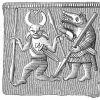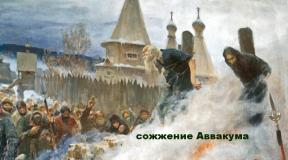Simon is the new science of management decisions. See pages where the term simon, herbert is mentioned. Along with Herbert Simon, representatives of the school of "social systems" are also Alvin Goldner and Chester Barnard.
Herbert Simon in his works investigated the processes of influence of established goals on rational behavior in organizations. he considered the behavior of a "business person" (fully informed about the activities of the organization), which is motivated by self-interest. Simon suggested the concept of an administrative employee, who pursues his own interests, but does not always know what they are. He is aware of only a few of all possible options for action and is inclined to make an adequate decision, not the optimal one.
From Simon's perspective, organizations can simplify decision-making — by limiting the goals to which activities are directed. Simon points out that goals affect behavior only when they are part of the decision about what the behavior should be. The goals are determined based on the value assumptions of the decisions. Value assumptions are assumptions about which goals are preferred. The more precisely the value prerequisites are indicated, the more rational the decisions made. Clearly established goals allow you to clearly distinguish between acceptable and unacceptable (or more or less acceptable) options for solutions.
The ultimate goals of organizations can serve as a starting point for the construction of chains of "means-ends", including the following set of actions: - the choice of a common goal that must be achieved; - finding a set of means from a wide range to achieve this goal; turn, as new subordinate goals and the search for more detailed means to achieve them, etc.
In this way, a hierarchy of goals is established, in which each level can be considered an ultimate goal in relation to the lower level and a means to an end in relation to the upper levels. The division of common goals into specific subordinate tasks and their subsequent distribution among organizational units (individual performers or departments) enhances the possibility of rational behavior by accurately defining value prerequisites. This makes it easier to make the necessary decisions at every level. In this regard, the hierarchy of the organization can be considered as a formed set of "means - goals" that determines the sequence of decision-making and actions within the organization. It is no coincidence that Simon and March describe organizational structure as "a set of action plans."
Organizations support rational decision-making not only by sharing responsibilities among participants, but also by providing them with the necessary means to fulfill them - resources, information, equipment. Guidelines and rules, information channels, training programs, standard operating procedures can all be seen as mechanisms to both limit the range of decisions made by each participant and to assist the participant in making decisions. Simon's Organizational Behavior Model emphasizes the importance of unobtrusive control of participants: training and the distribution of information play a more significant role in the development of rational behavior than orders or sanctions.
Simon's organizational decision making model is based on the concept of cognitive constraints to individual decision making. Simon emphasizes that an isolated individual cannot achieve a high degree of rationality, since the number of options that he must consider is very large. Individual choice occurs on the basis of "given", that is, the premises accepted by the subject as a basis for choice. Behavior will be determined on the basis of the limits established by these "given". Organizations define a complete set of objectives, enduring expectations, required information and tools, a current work program, and a set of constraints within which the required decisions can be made. These "givens" are provided to individual members. In this sense, Simon and March consider the concept bounded rationality, which integrates the two key elements of a rational systems perspective, purpose specificity and formalization, which emphasizes the importance of rules and regulations in maintaining rational behavior within an organization. It is emphasized that organizational behavior, especially decision-making, requires first of all to follow the rules, and not to calculate the consequences. Simon, like Weber, distinguished formal from technical rationality. The model developed by Simon can also be used to explain how structures designed to provide rationality can, under certain conditions, backfire.
Glacier Theory The universal theory of organizational formation - the so-called Glacier theory - emerged from a long-term research project in the late 1940s at the Glacier Metal Company in London. It was a joint project of the company's executives and the Tavistock Institute for Human Relations Research Group. The research program and its principal results and conclusions are reflected mainly in the works of Wilfred B.D.Brown and Elliott Jackwes. Glasier's theory identifies the coexistence of at least four subsystems in every organization. Each of these subsystems performs exceptional functions within the organization, and at the same time, they partially overlap and interact with each other. Executive subsystem - it is a structure consisting of functions, the executors of which must follow certain requirements. The division of labor, departmentalization and delegation of authority lead to the creation of various functions that must interact to get work done in the organization. Moreover, the functions form a hierarchy, or a chain of commands, and the optimal number of levels is determined using the required loads of time for each function. The concept of time loading is key to Glasier's theory. It determines the level of stress to do the job. The nature of work changes as you move up the hierarchy. This difference lies primarily in the level of abstraction required to accomplish the assigned tasks for a given function. Working in an organization places very different demands on those who are involved in different vertical functions in the hierarchy. Work in the first echelon is necessarily performed at a level of abstraction that makes it necessary to report in a short period. The higher you go up the hierarchy of functions, the longer it takes for the next report. Accordingly, as you move along the hierarchy of functions, the object of work becomes more distant, such as, for example, with the chief executive who manages the firm's activities in domestic and foreign markets. With an optimal executive structure, work is analyzed at each level to determine the load of time. The hierarchy of the executive subsystem is designed in such a way as to show that each “leader-subordinate” pair is a distinctive feature of exactly one level. At the same time, the functions of selection and staffing involve finding people with the required workload of time to fulfill work requirements. Appeals subsystem has the following main features: - each member of the organization has the right to appeal against any decision of the head at a higher level of management, up to the level of the general manager; - in some cases, he can apply to the court of appeal, consisting of representatives of the work council, the board and the chairman of the invited court from the outside; - the task of the employee considering the complaint is to make a decision based on the policy of the organization, the "established procedure" and the precedent; - any party hearing about the complaint can turn to a lawyer for advice. A lawyer can make recommendations to both parties; - there is no real distinction between the roles of a manager in the executive and appellate subsystems. Representative subsystem form by electing representatives who are members of the work council together with the leaders. Representatives bring complaints from members of the organization to the attention of managers. These complaints can relate to any aspect of performance, management, or qualitative and quantitative aspects. The representative subsystem functions on the basis of the adopted laws. Function legislative subsystem - development of organizational policy with the participation of elected representatives of the work council. Representatives, in meetings with leaders, develop an “established order” that allows leaders to operate within a broad framework. The legislative subsystem makes decisions on hiring, the distribution of work in time, work rules, etc.
Glasier theorists have identified the existence of two systems - production and social. They believed that the leader should equally ensure the functioning of the executive and representative subsystems.
Simon was a pioneer in information psychology and was active in areas such as mathematical economics and organization theory.
SIMON Herbert
(1916-2001) - American economist, sociologist, psychologist, one of the founders of cognitive psychology. He studied at the University of Chicago (Bachelor of Arts, 1936, Doctor of Philosophy, 1943), later defended his doctorate. dis. rightfully at Montreal McGill University (1970). He began his professional career as a research assistant at the University of Chicago (1936-1938). From 1939 to 1942 he was the head of the educational department of the California University. Then he taught at the Illinois Institute of Technology (Assistant Professor of Political Science, 1942-1945; Associate Professor, 1945-1947; Professor, 1947-1949). At the same time, from 1945 to 1965 - Professor of Administration and Psychology at Carnegie University in Pittsburgh. Since 1965 - Professor of Computer Science and Psychology. From 1949 to 1960 - Dean of the Faculty of Industrial Administration, from 1957 to 1977 - Dean of the Higher School of Industrial Administration. Poch. Dr. of a number of high fur boots of the USA and Europe. Has the ARA Scientific Contribution Award (1969). Awarded the Nobel Prize in Economics (1978). Received the J. Mediso Award from the American Political Science Association (1984). He began his career in economics and political sciences. After completing his education, he turned to the problem of making government decisions (Berkeley, California University, 1939-1942). He pioneered the application of quantitative methods in sociology, economics and management. During this period, he wrote doct. dis. on the adoption of organizational decisions, which was later published as a monograph (Administration behavior, N.Y., 1947). The development of cybernetics in the 1940s. went parallel to the interests of S. in the field of decision-making, and he began to develop cybernetic models for the development of administrative decisions. In 1952, Mr .. S. - consultant corporation RAND, where he began his collaboration with Allen Newell. Having familiarized himself with the electronic computers that appeared at this time, S. came to the conclusion that they could be used to reproduce human thinking. In 1955, together with A. Newell, he began to work on programs that later had a huge impact on the development of cognitive psychology. Based on the computer metaphor of brain activity, a number of machine thinking models have been created. Together with A. Newell and J. Shaw, using the results of the psychological research of O. Zeltz, S. developed computer programs Logic-theorist and the Universal Problem Solver, based on the assumption that the heuristic activity of a person proceeds in the same way as the process of calculations, or execution programs. In his models S. postulates the presence of one central processor (counter) with access to the outside world, short-term and long-term memory. These models were tested on the material of proving geometric theorems, solving cryptoarithmetic problems and playing chess. However, S.'s program was much less successful in relation to the problems of real life. Nevertheless, it continues to remain relevant in relation to those aspects of this approach: the definition of problem space, purposeful problem solving, and methods for solving problems out of context. Major works C: Administrative behavior. 1947, 1976; Public administration / (with Smithburg D. W., Thompson V. A.), N.Y. 1950; Models: their uses and limitation (with A. Newell) // (Ed.), 1956; Models of men: social and rational. N.Y. 1957; The Shape of automation for men and management. N.Y. 1965; The sciences of the artifica, 1969; Human problem solving, 1972 (with A. Newell); Models of thought, New Haven, 1979; and others. In Russian. per .: Processes of creative thinking // Psychology of thinking. M., 1965; Mechanisms causing the striving for uniformity in groups, et al. / Mathematical methods in the social sciences, M., 1973; Management in the organization, et al., M., 1995. L.A. Karpenko, I.M. Kondakov,
Herbert Simon published a book: Models of Men: Social and Rational, where he substantiated his concept of bounded rationality in detail.
The fact is that before the book was published, so many scientists believed that man is a rational creature and in various situations always strives to get the maximum.
According to Herbert Simon, a more accurate description looks like this: there is a certain level of aspirations / aspirational level, which a particular person considers satisfactory for himself, and to which he strives. Or: a person makes a satisfactory, that is, a relatively good - instead of the best - decision.
To really find the optimal solution in a difficult situation, you need to analyze many options, which, as a rule, people refuse ...
“… He substantiates the idea of the so-called 'bounded rationality'. What is this “limited” vision of rationality?
At first, G. Simon recognizes that the thinking capabilities of the person constructing the model are themselves limited, and therefore they are far from always adequate to the level of uncertainty of situations and the complexity of problems arising in management, as well as the need for in-depth analysis and rapid assessment of all available alternatives.
Secondly, organizations, as decision-making centers, rarely have all the necessary and well-developed information to make effective decisions.
Third, there is no clarity about the goals and means, values and criteria by which the content and design of the solution could be assessed. After all, the organization consists of people who can have different interpretations of common goals and have different values.
And finally, fourthly, decision-making in real politics is subject to the pressure of the social environment and therefore does not quite resemble a calm game of chess in a quiet place. Often, under the pressure of various social factors, a reformulation and revision of the content of the decision occurs, and even after finding and approving its final version.
By virtue of these arguments, G. Simon proposes, instead of the concept of "optimal" (that is, the most effective and rationally grounded) solution, to introduce into circulation the concept of "satisficing", in other words, a preferred solution according to some criteria. "
Content
Introduction ……………………………………………………………… .. …… 3
1.Personality of Herbert Simon ………………………………………… ... 5
2. The theory of the school of social systems …………………………….… ...… ..10
3. The main directions of Simon's scientific management ……………… 12
4. Differences in the views of Simon with Veblen and Bernard …………… ..18
Conclusion ……………………………………………………….….… ........ 21
List of used literature ……………………………… ........ .... 22
Introduction
In American sociological literature in the 1960s and 70s. many authors appeared, most of whom mainly relied on the views of the "pioneers" of the school of "social systems", differing from them only in nuances and accents. The names of individual authors periodically gained popularity, and then gradually fell into oblivion. But the approach of this school to various forms of enterprises and organizations, primarily as a "social system", has indisputably established itself as one of the leading directions in the formation of the theory of organization. Representatives of the "systemic" school characterize the organization as a large, complex social system that interacts with other systems both outside and within this system. The concept of "modern organization" is identified with a system that requires an integrated, comprehensive approach, taking into account its multifactorial and multi-purpose significance.
One of the representatives of the school of "social systems" is Herbert Simon. Many believe that Herbert Simon's work on the principles of "decision-making" by firms in the face of uncertainty has revolutionized microeconomics because it contradicted the premise of subject rationality often adopted in traditional microeconomics work. Of course, Herbert Simon was not the first to dare to criticize these provisions, but his work in this direction is still the most famous, and Simon himself was awarded the Nobel Prize in 1978. Simon began his scientific career in the Cowles Commission and, naturally, his first works were in this direction. The most important work of this period is considered to be the 1949 paper defining the Hawkins-Simon conditions for non-negative square matrices.
Subsequently, Simon began researching industrial organizations, and one of the many conclusions was proof that the internal organization of the firm and the decisions it makes about behavior in the external market do not correspond much to neoclassical theories about "rational" decision making. In his numerous works after the 1950s. Simon paid close attention to decision-making issues, and eventually put forward a theory of behavior based on "bounded rationality". He argued that workers face the uncertainty of the future and the uncertainty of the costs of obtaining information in the present. Thus, these two factors limit the ability of workers to make fully rational decisions. Simon argued that they can only make "boundedly rational" decisions, and are forced to make decisions in accordance not with "maximization", but only with "satisfaction", that is, setting a certain level at which they will be quite satisfied, and if it is impossible to achieve this level, they will either lower the level of their claims, or change their mind. These "rules of the thumb" define the greatest results that can be achieved in a "limited" and uncertain real world. Simon backed his conclusions with numerous studies of decision-making in industrial enterprises, as a result of which enterprises began to apply the "new" theory of the firm as a "satisfying" rather than a "maximizing" agent. Simon's theory of bounded rationality has become an integral part of New Institutional Economics.
- The personality of Herbert Simon
By 1933, when Simon entered the University of Chicago, he made the decision to become a social science mathematician. His curriculum included political economy, logic, mathematics, biophysics, and econometrics. Studying his undergraduate course in physics, he showed interest in the philosophical problems of physics, which was preserved throughout his subsequent life, and subsequently published several articles on these problems.
After completing his bachelor's degree in 1936, Simon became an Assistant Researcher in the City of Chicago Municipal Administration. His early work in this area led to his appointment in 1939 as director of a similar research group at the University of California. Three years later, after the expiration of the period for which the research funds had been allocated, Simon returned to Chicago to continue his graduate studies. Concurrently with his studies, he worked as an assistant professor of political science at the Illinois Institute of Technology.
After receiving his doctorate in 1943, Simon remained at the University of Chicago, where in 1946 he was appointed head of the Department of Political Science.
In 1948, he briefly moved to work in the government administration, accepting the post of one of the assistants to the United States government, in order to participate in the creation of the Economic Cooperation Administration formed to implement the Marshall Plan (named after the state Secretary George Marshall) to assist Western European countries for their economic recovery after the Second World War.
In 1949, Simon moved from Chicago to Pittsburgh, where he helped organize the new Graduate School of Industrial Administration at Carnegie Mellon University. There he became a professor of administration. Since 1965, he has been a professor in the Department of Computational Sciences and Psychology. In this position, he conducted research work in the field of psychology, information processing, computer modeling of cognitive processes, organization theory, artificial intelligence and decision theory.
In 1947, one of Simon's several books on decision-making theories, Administrative Behavior, was published. In it, he described the business firm as an adaptive system that includes material, human and social components, interconnected by a communication network and the common desire of its members to cooperate with each other to achieve common goals. Simon rejected the classical concept of the firm as an omniscient, profit-maximizing enterprise.
Instead, he showed that in a firm, decisions are made by its members collectively, and their ability to act rationally is limited both by the inability to foresee all the consequences of their decisions, and by their personal aspirations and social prospects. Because such a decision-making process can only lead to satisfactory rather than best results, Simon concluded that firms do not aim to maximize profits, but to find acceptable solutions to their complex problems. This situation often forces us to set conflicting goals.
In Models of Man (1957) and Organization (1958), Simon develops further the theories advanced in Administrative Behavior. He is confident that the classical theory of decision making was missing an important element - a description of the behavioral and cognitive qualities of those people who process information and make decisions.
Much of Simon's later research has focused on artificial intelligence and the computerization of science. As early as 1952, a discussion with Allen Newell, then a research scientist at the Rand Corporation, spurred his interest in these issues. The two began to conduct research together in the field of problem solving using computer simulations, and over time, this area became central to Simon's scientific endeavors. In 1961, Newell moved to Carnegie Mellon University, where he became a professor, and joined Simon entirely. Continuing their collaboration, these scientists published the book Solving Human Problems in 1972. In addition to empirical research in the field of decision making in the field of business and business psychology, S. studied the relationship between the size of firms andtheir economic growthand made a significant contribution to the central problem of microsystem aggregation.
Simon's theories have been criticized, especially by such highly respected economists like Edward Mason, Fritz Machlap and Milton Friedman. While appreciating the merits of Simon's descriptive decision theory, they questioned its value for economic analysis. In addition, his realistic attitude to the decision-making process undermined the basic postulates of the theory of general equilibrium and the simple hypotheses of maximization and optimization of functions. arrived and the utility on which this theory is based. However, these seemingly antagonistic approaches address different sets of problems in economics and are therefore complementary. Simon discovered the field of empirical testing of the hypotheses on which decision-making is based.
Simon was awarded the Nobel Memorial Prize for economy for 1978 "for his innovative research on decision-making in economic organizations." During the presentation and presentation of the award, Sune Karlson, a member of the Royal Swedish Academy of Sciences, stated that “learning about the structure of the firm and making internal decisions has become an important taskeconomic science... And in this new area of research, Simon's work has proven to be extremely important. Simon's theories and observations in the field of organizational decision-making are fully applicable to the systems and techniques of planning, budgeting and control, which are used in the field of business and in public administration. They therefore provide an excellent basis for empirical research. ”
In his autobiographical essay, he noted that “in the policy of science that flowed out of my other activities, I adhered to two guiding principles - to strive for greater 'rigor' of the social sciences so that they would be better equipped with the tools necessary to address the challenges they face. difficult tasks, and foster close interaction between natural and social scientists so that they can jointly apply their specialized knowledge and skills to the many complex issues of public policy that require both types of wisdom. ”
In 1937, Herbert Simon married Dorothy Pye. They have a son and two daughters. He himself is fond of walking, mountain climbing, painting and playing the piano. He speaks several languages fluently.
In addition to the Nobel Prize, he received the American Psychological Association Award for Outstanding Contribution to Science (1969). He is a member of the American Economic Association, the American Psychological Association, the Econometric Society, the American Sociological Association, the American National Academy of Sciences. He was awarded honorary degrees by the universities of Chicago, Yale, McGill, Lund and Erasmus (Rotterdam).
- The theory of the school of social systems
Communication is usually understood as a method by which an action is invoked in various parts of the system. But communication is designed not only to induce action, but also to be a means of control and coordination. The communication system forms the structure, configuration of the organization.
Equilibrium as a connecting process is considered as a mechanism for stabilizing the organizational whole, its adaptation to changing conditions. The purpose of this mechanism is also to "harmonize" the needs and attitudes of individuals with the requirements of the organization.
The school of “social systems” considers the decision-making process to be the most important means of regulation and “strategic leadership”. In accordance with this, the organization itself is often interpreted as a decision-making tool.
Purpose is generally recognized as the main integrating factor of an organization. At the same time, a distinction is often made between the goals set for a given organization and the goals inherent in all organizations as such. The latter goals are considered to be driven by the intrinsic needs of growth and survival.
Based on the analysis of social organization, representatives of the school of "social systems" are trying to identify universal, permanent elements of any organization in general ("organizational universals"), inherent in both the clockwork and the social. This desire to create a universal theory of the organizational process is combined with attempts to apply the achievements of cybernetics, mathematical methods, etc. in solving the same problem. But, ultimately, all these studies are subordinated to the particular task of creating a theory of organizational management, which, first of all, is applied to industrial enterprises.
So, the "school of social systems" considers the organization as a complex system with a number of its constituent individual subsystems. These subsystems usually include the individual, the formal structure, the informal structure, the informal organization, statuses and roles, and the physical environment. Together, they are defined as an organizational system. The central methodological concept is the concept of "connection", or "connecting processes". There are three main connecting processes: "communication", "balance", "decision making".
As already noted, the school of "social systems" was strongly influenced by the structural and functional direction in American sociological theory, and above all the works of T. Parsons and R. Merton.
The school of "social systems" tried, from the standpoint of the latest sociological concepts, to critically analyze previous views on the nature and methods of management and to generalize new practical experience in the field of organization and management.
Along with Herbert Simon, representatives of the school of "social systems" are also Alvin Goldner and Chester Barnard.
- The main directions of Simon's scientific management
The first decision that any member of the organization makes is the decision to participate or, on the contrary, not to participate in it. Following Barnard's "principle of equilibrium", Simon believes that each person, investing in this organization his labor or capital, proceeds from the fact that the satisfaction that he will derive from the "net preponderance of incentives over contribution", "measured in relation to their usefulness to him ”, More than the satisfaction that he would have received by refusing to participate in this organization. Thus, the “zero point” in such a “satisfaction function” is defined in relation to the “possible participation cost”.
If, considering the issue of his participation in an organization, an individual is guided by personal considerations, then after he makes a positive decision, personal goals gradually fade into the background and are subordinate to the goals of the organization. If the "mechanism of influence" in the organization is established in such a way that creates a balance between motivation and contribution, in which all members of the organization are ready to actively participate in its activities, giving all their energy to the tasks of the organization, such an organization has, according to Simon, a "high moral standard ".
Simon examines in detail the various components of the "mechanism of influence", among which he gives the most important place to authority, and also examines other external influences: training, recommendations, messages that attract attention, etc. The essence of Simon's concept is that managers must effectively use all forms of external influences to influence the personality of an employee, to transform a person to such an extent that he performs the desired actions “rather due to his own motivation than under the influence of instructions received at the moment ".
Paying tribute to the doctrine of "human relations", Simon tries to combine it with a systems approach to the organization of management. He draws an ideal scheme for the functioning of an organization in which the activities of all its members are motivated by the desire to contribute to the effectiveness of the organization through the optimal identification of personal and common goals. This, he is convinced, will reduce the need for authority only to making adjustments, since the need to apply it in the form of sanctions will lose any significant significance. Simon makes even more far-reaching conclusions, claiming that modern society gives more and more authority to "functional status" and less and less to hierarchy. From this point of view, members of the organization are increasingly
they get used to accepting proposals from functional specialists, since there is, on the one hand, “belief in competence”, and on the other, “good intentions of those in power”.
Simon pays considerable attention to the problem of communication in the organizational system. He defines communication as "any process by which the premises for decision-making are transferred from one member of the organization to another." At the same time, the two-way nature of communication is indicated: the flow of information to the center, where decisions are made, and the transfer of decisions from the center to other parts of the organization, in other words, the process of transferring the decision takes place not only vertically, but also horizontally, or, as Simon puts it, "Laterally throughout the organization." Unlike Barnard, Simon places less emphasis on the “formal network of authority,” emphasizing the importance of informal channels of communication.
Representatives of the school of "social systems" pay considerable attention to the problem of "divergence or differentiation of goals" of the organization, due to the increasing complexity of the organizational structure and the increase in the number of departments. Applying systems analysis to the process of “differentiating goals” of an organization, March and Simon distinguish four “variables” that directly affect and determine this process:
1) the system and procedure for the selection of personnel and "types of interaction" that generate a common goal of the members of a given group, subgroup or subdivision;
2) "excessive organizational resources", "weaknesses of the organizational structure", which groups or subgroups can use to form their subgoals, which differ from the goals of the organization as a whole;
3) the effectiveness ("operational") or possible ineffectiveness of the overall goals of the organization as a whole, as a result of which there is a need to clarify and clarify them through the use of various incentives, including the reward system;
4) differences in individual perception, which in part depend on the following factors:
a) the number of sources of information;
b) the share of the information received;
c) cognitive abilities that underlie the process of making organizational decisions.
A significant place in the studies of the school of "social systems" is occupied by the problem of choosing criteria for the design of units in an organization. Rejecting the principle of departmentization put forward by the "classical" theory. Simon believes that the division of an organization into divisions should be based on the types of decisions that will be made, and the main criterion for assessing the structure should be its impact on behavior. “By analyzing the prerequisites for the most important decisions,” Simon writes, “you can predict the main contours of the decision-making process ... and based on the decision-making process, the main features of the organizational structure.”
The subject of social research of the school of "social systems" is also the problem that the "classical" school defined as "coordination through hierarchy." The task of coordinating the activities of an organization is inextricably linked with the existence of various departments in it, with the differentiation of functions, and specialization. The systems approach fully recognizes the importance of this "classic" principle.
Simon stresses the importance of centralized decision making as a means of coordination, professional competence and responsibility. At the same time, he points out some of the shortcomings of centralization, which are manifested in the delay in decision-making, "blockage of communication channels", diverting the attention of senior management from important issues to insignificant ones, etc. The most significant disadvantage of centralization, Simon and March, considers its dysfunctional effects on motivation. Since motivation is determined by many factors other than system and leadership, the "predominance of power ties" and "lack of tangible participation" of members of the organization in decision-making have, according to both sociologists, a significant dysfunctional impact on the behavior of people in the organization and their attitudes towards it. "
From Simon's point of view, the problems of centralization and decentralization do not exist without regard to the decision-making process. Making decisions about the organization as a whole reflects the essence of centralized leadership. Since every person who makes decisions has only "limited rationality", i.e. “Limited by their unconscious habits, habits and reflexes… by their values and a concept of purpose that may be at odds with the organization’s goals… (as well as) the degree of their knowledge and information”, those in a subordinate position are probably less likely than leaders , are able to make decisions that are rational from the point of view of the entire system.
When determining the level of decision-making, Simon notes the importance of taking into account such a factor as the correspondence of this level from the point of view of the formal system to the level of “group values”, “group social environment”. Another criterion for determining the place of the decision-making process in the organization Simon calls the compliance of this level with the availability of the necessary information and the rational coordination of certain functions.
Considering the prospects for the development of management organization in the light of the increasingly widespread use of economic and mathematical methods and the use of computer technology, the supporters of this direction sought to foresee the impact of this kind of innovation on "human relations". Simon believes that, although the new management technique strengthens centralization, it nevertheless significantly changes its forms in comparison with traditional methods, since in the new conditions centralization acquires an impersonal character. Moreover, the all-round mechanization and automation of certain management functions will contribute, in Simon's opinion, to a change in the nature of the work of middle managers, both in terms of streamlining it on the basis of centralization, and in terms of implementing this in the most favorable way (neutralizing the oppositely directed influences usually experienced by this link of management, and thereby providing a healthier psychological environment).
So Simon sees organizations as systems in which people are "decision-making mechanisms." The personal and general goals of the members of the organization are optimally identical and are motivated by the desire to contribute to the effectiveness of the organization. Simon believes that the division of an organization into divisions should be based on the types of decisions that will be made, and the main criterion for assessing the structure should be its impact on behavior.
- Differences in the views of Simon with Veblen and Bernard
In fact, continuing the criticism of T. Veblen, Simon criticized the theory of maximizing behavior of consumers and firms. In a real economy, people behave differently, and this is explained by two features of their thinking.
1. There is a certain level of aspirations, which a person considers satisfactory for himself, and to which he strives. If he cannot reach it for some time, this level is revised downward. If this does not happen, then an emotional exit begins - apathy, aggression, etc. Thus, consumers strive for some satisfactory state, and firms strive for some satisfactory level of sales or profits. Not maximization, but satisfaction - this is the principle of action of the consumer or manager.
etc.................
SIMON, HERBERT ALEXANDER(Simon, Herbert Alexander) (1916–2001), an American scientist who studied the principles and processes of decision-making in various fields of human activity and received fundamental results in many exact and human sciences - from mathematics and economics, where his contribution was assessed by the Nobel Prize in 1978 award, to psychology and artificial intelligence. Simon was born on June 15, 1916 in Milwaukee (Wisconsin) in the family of an electrical engineer. From 1933 to 1936 he studied at the University of Chicago, majored in political science, but also studied economics, logic, physics and biophysics; among his immediate teachers were R. Carnap and G. Lasswell. In the next few years he was engaged in the study of the activities of municipal authorities, in 1939-1942 he headed a research group at the University of California at Berkeley. In 1943 he received his doctorate in political science from the University of Chicago. After completing his research grant at Berkeley, he returned to Lakeshire, where he worked at the Illinois Institute of Technology and regularly participated in seminars of the "incubator" of Nobel laureates - the Coles Commission on Economic Research, which was based at the time at the University of Chicago.
In 1947, the first of Simon's classic books came out of print - Administrative behavior (Administrative Behavior, 4th ed. 1997). In addition to studying the principles of the functioning of organizations, it outlined the contours of the concept of "bounded rationality", which three decades later brought Simon the Nobel Prize. The idea of "bounded rationality" belongs not to the economic, but to the socio-psychological and even anthropological field and consists in the fact that when searching for and making a decision, in many, and in certain conditions and in most cases, a person does not strive for the best solution, but is limited to the very first , albeit not an optimal satisfactory solution.
In the late 1940s and early 1950s, Simon participated in the creation of the Office for Economic Cooperation, which coordinated the Marshall Plan (later this office was transformed into the International Organization for Economic Cooperation and Development), and was also involved in the economic justification of the development of nuclear energy and research in the field of mathematical economics. ...
In 1949, Simon became a professor at the Carnegie Institute of Technology in Pittsburgh, where he helped found the School of Industrial Management. At the Carnegie Institution (since 1967 - Carnegie Mellon University), he spent all his further scientific life; Together with A. Newell, the scientist played an important role in transforming this initially little-known educational institution into a prestigious university and one of the leading American and world centers of computer science, directly participating in the creation of the School of Informatics and the Department of Psychology there.
Committed to introducing precise methods into the social sciences, Simon came to the conclusion in the late 1940s and 1950s that it would be useful to study search and decision-making processes through computer modeling. In 1952 he met A. Newell at the RAND Corporation. At first, based on the ideas of A. Turing and K. Shannon, they became interested in creating a program for playing chess, and a little later set themselves the goal of simulating a person's ability to prove logical and mathematical theorems. This problem, to which the systems programmer at RAND J. ("Cliff") Shaw joined in, was quickly solved. The "Theoretical Logicist" model was created in December 1955 (Newell had by then moved to Pittsburgh, while remaining an employee of the RAND), in the summer of 1956 it was implemented as a computer program, and on September 11, 1956, the model was reported at a symposium on information theory at the Massachusetts Institute of Technology. Subsequently, Simon and Newell, with the participation of Shaw, developed a number of other programs that simulate such types of human activity, which were considered to be intellectual. They also returned to creating a chess program, but the main product was the General Problem Solver, which embodied the general model of problem solving. In 1972, when artificial intelligence was an established discipline, the results of this period were summarized in the book by Newell and Simon Human problem solving (Human problem solving).
The work of Simon and Newell in the 1950s had a critical impact on the development of computer science and computing. They set the so-called symbolic information processing paradigm, which is based on the hypothesis that human thinking is most adequately modeled as basically sequential and algorithmic operation with some symbols that somehow reflect reality. Human thinking is provided by the action of one of the varieties of what Simon and Newell called the physical symbol system, at some level of consideration fundamentally identical for humans and computers (this thesis is called a computer metaphor, or the concept of disembodied intelligence).
When, in the 1970s, it was realized in artificial intelligence that specific knowledge, along with general principles of thinking, also play an important role in real thought processes, the semantic structure of a natural language began to be considered as one of the sources of this knowledge. Thus, Simon, in whose huge creative heritage there were practically no linguistic works, for several decades determined the productive interaction between linguists and representatives of computer science.
In the late 1950s, Simon continued to study economics and management theory, publishing books The organization (Organizations, 1958, together with J. March) and The New Science of Management Decisions (The New Science of Management Decision, 1960), however, starting in the 1960s and especially in the 1970s, an increasingly important place in his research began to be occupied by the problems of artificial intelligence, cognitive psychology, and subsequently also logic, methodology and psychology of science. This shift, which Simon himself saw as a perfectly logical development of his interest in decision-making processes and his personal contribution to their scientific study, began with the book Human Models (Models of Man, 1957). In 1969, the first edition of Simon's book was published Artificial sciences (The sciences of the artificial, 3rd ed. 1996, rus. per. 1972), which examined in detail the epistemological functions of computer modeling as a research method; this book is still one of the main methodological works on "computer science".
In 1979 Simon published the first, and in 1989 - the second volume Thinking models (Models of Thought). In the early 1980s, within the framework of his concept of artificial sciences, he substantiated the status of a new scientific discipline - cognitive science, which arose as a theoretical component of artificial intelligence and, at the same time, an interdisciplinary synthesis of the sciences of human thinking. Books devoted to the interdisciplinary study of scientific discoveries Discovery models (Models of Discovery, 1977) and co-authored Scientific discoveries: computer research of creative processes (Scientific Discoveries: Computational Explorations of Cognitive Processes, 1987). In 1982, works were collected and published on "bounded rationality" ( Models of Bounded Rationality, in 2 volumes), in 1997 the third volume was published.
Pavel Parshin



















